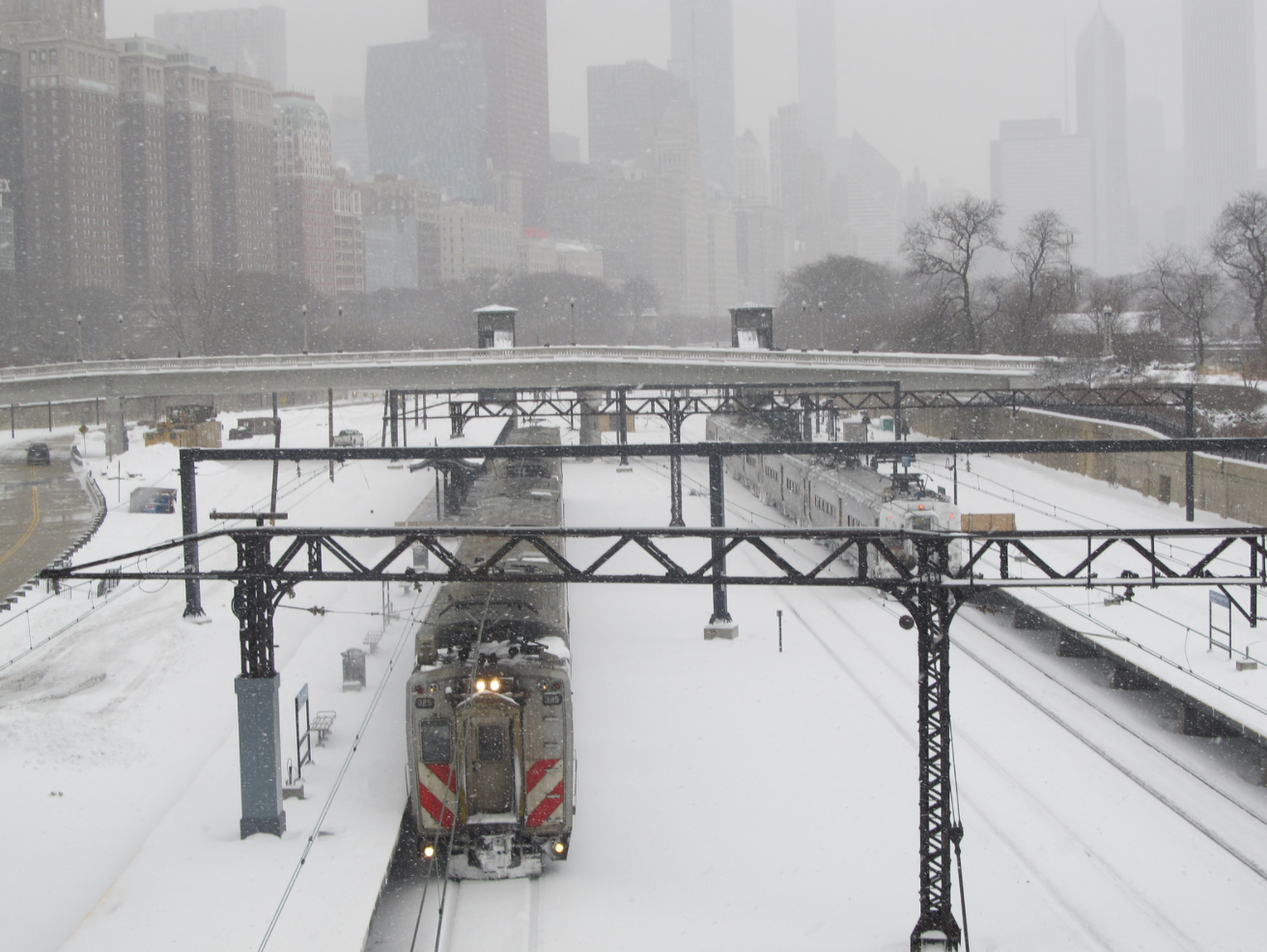Metra has had a terrible, horrible, no good, very bad year, and that's evidence that we need to take action to properly fund the system.
As the Chicago Tribune has reported, during the last 12 months the commuter railroad has experienced problems with the installation of the Positive Train Control safety system. Riders on the busiest route, the BNSF Line to Aurora, suffered through overcrowding and air conditioning failures this summer.
The Metra Electric District line completely shut down due to weather-related equipment issues during the late-January Polar Vortex, when crews had to light fires by tracks to keep the trains rolling. The MED service was canceled yet again during a mid-February ice storm. That was just days before the railroad was scheduled to offer free rides to all commuters over the weekend in February to thank them for their Polar Vortex patience.
Commuter frustrations with unreliable Metra service reached a boiling point last Thursday, when all rail lines out of Union Station were disrupted by a signal problem, causing delays for over 60,000 people, including waits of over two hours for some inbound riders. Crowds of passengers waiting to board trains backed up into station’s Great Hall, which, surreally, was partially occupied by an in-use pop-up squash court. Service was back to normal Friday morning.
That fiasco wasn’t Metra’s fault. The Tribune reported that the delays were caused by Amtrak’s ill-advised decision to upgrade its servers during business hours, which resulted in a shutdown when a worker tumbled from a ladder and hit a circuit board. That disrupted Union Station’s entire computer and signaling system, forcing signal and switching points to be operated manually, which meant only one train could leave the station at a time. There were 98 train delays and 33 cancellations as a result. Amtrak’s CEO later apologized for the multiple errors that led to the crisis, and promised to fix the problem so that a similar debacle doesn’t happen again.
In late February Metra announced that ridership fell almost 9 percent from 2014 to 2018, in the midst of recurring technical problems, as well as multiple fare hikes and service cuts. One recent bright spot is this week’s launch of new reverse-commute service to Lake County on the Milwaukee District North line, subsidized by local municipalities and businesses. But it’s understandable that fewer people are choosing to ride commuter rail when the service is increasingly unreliable, there’s generally less of it, and it costs more.
Now that we have your attention, can we get long-term, sustainable funding? The state of Illinois hasn't passed a capital funding bill in a decade, nearly half of our assets are in marginal or worn condition, and our railcars and locomotives are some of the oldest in the nation. https://t.co/Grc9Y5GySR
— Metra (@Metra) January 31, 2019
As Metra, the Regional Transportation Authority (which oversees Metra, the CTA, and Pace), and advocacy groups like the Active Transportation Alliance and the Metropolitan Planning Council have pointed out, there’s only so much the commuter railroad can do to improve service when it’s starved for funding. More money is needed for track, signal, and rolling-stock upgrades that would increase reliability, as well as to prevent cuts and fare increases. With proper funding, maybe Metra could even add more runs without depending on outside-the-box subsidies like the Lake County initiative.
Granted, Metra should be doing a better job on onboard fare collection. As it stands during busy times payment is almost optional, since the conductor often miss riders who don’t proactively offer their money. (Reminder: “Be fair, pay the fare.”)
But Metra’s financial problems are largely due to number of external forces. In the wake of Illinois’ 2016 budget deal, the state cut funding for transit in its 2017 and 2018 budgets. Our state hasn’t passed an infrastructure funding bill in more than a decade. And the state gas tax has been stuck at 19 cents a gallon for almost 30 years, which means that that the revenue generated for transportation has less buying power every year as inflation increases.
Fortunately, there’s some hope on the horizon. New governor J.B. Pritzker has voiced support for passing a capital bill, as have other lawmakers. In December, outgoing Chicago mayor Rahm Emanuel called for raising the state gas tax (in fairness, he had little to lose politically by doing so), which could help fund the infrastructure bill. Pritzker has indicated that he’s open to that solution, and the $15 state minimum wage he just passed would help offset the regressive aspect of raising the fuel tax. (Note that capital funding can only be used for infrastructure, not operating a transit service.)
Progressive ideas like switching from a flat state income tax to one with income brackets (so that wealthier people pay a higher rate), and a “LaSalle Street tax” on financial transactions, could also potentially result in more funding for transit. And, looking further down the road, groups like MPC have noted that switching from a gas tax to mileage-traveled fees could help raise revenue by ensuring that drivers of hybrid and electric vehicles pay their fair share for the upkeep of the roads they use.
If we have the political will, and a bit of courage from state legislators, we can start solving the funding problems that have contributed to most of the recent Metra headaches. But we’ve got to get on top of this issue. The relative ease of transit commutes downtown from across the city and the region is one of Chicagoland’s fundamental strengths. If we can’t maintain that advantage, it’s going to greatly diminish our city’s prosperity and influence on the national and global stages.





